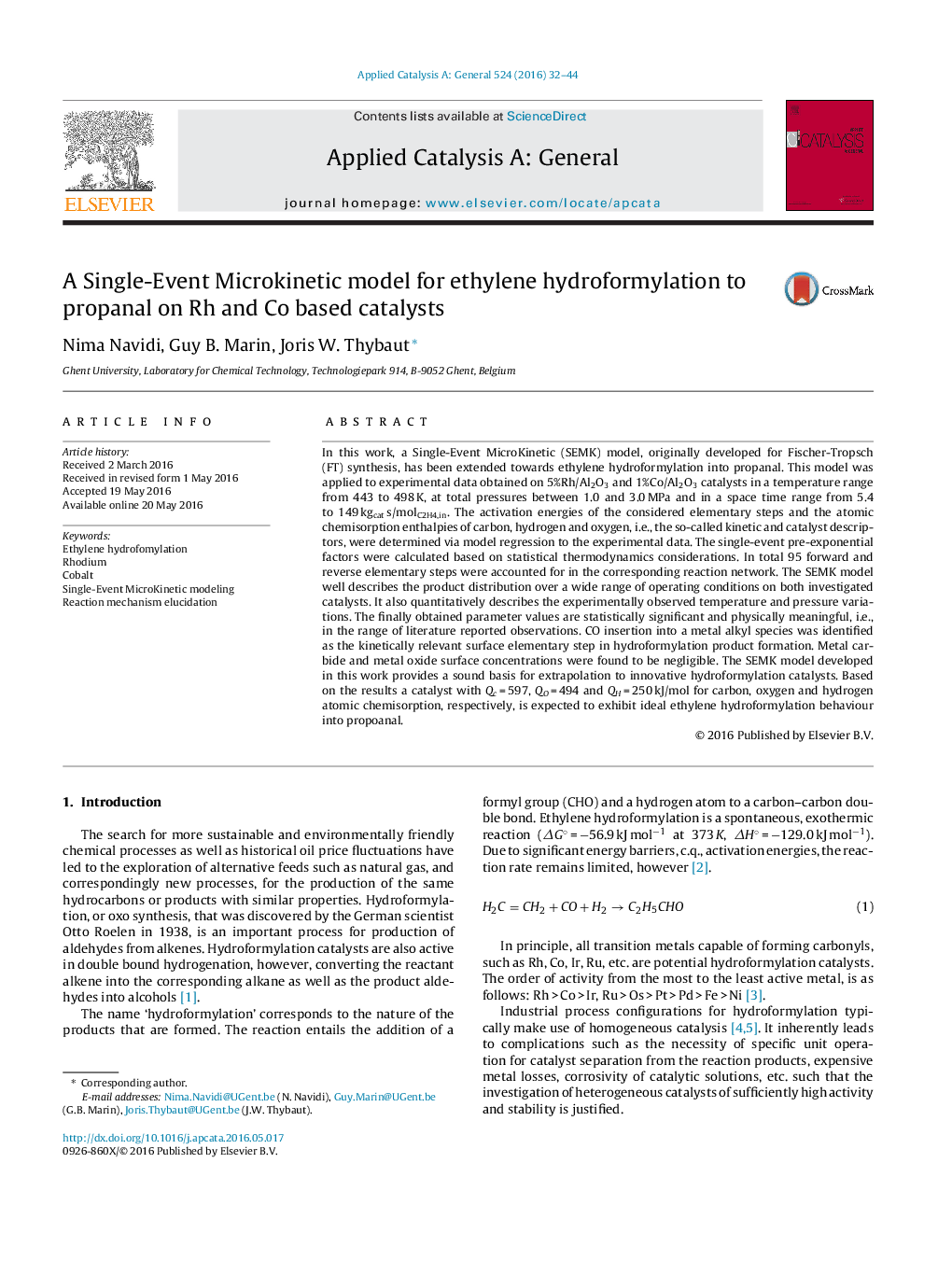| Article ID | Journal | Published Year | Pages | File Type |
|---|---|---|---|---|
| 38720 | Applied Catalysis A: General | 2016 | 13 Pages |
•Single-Event MicroKinetic (SEMK) methodology has been extended towards hydroformylation.•Atomic chemisorption enthalpies for O, C and H explain activity and selectivity differences between Co and Rh.•Strong C and weak O chemisorption as expected on Ir seems optimal for ethylene hydroformylation.
In this work, a Single-Event MicroKinetic (SEMK) model, originally developed for Fischer-Tropsch (FT) synthesis, has been extended towards ethylene hydroformylation into propanal. This model was applied to experimental data obtained on 5%Rh/Al2O3 and 1%Co/Al2O3 catalysts in a temperature range from 443 to 498 K, at total pressures between 1.0 and 3.0 MPa and in a space time range from 5.4 to 149 kgcat s/molC2H4,in. The activation energies of the considered elementary steps and the atomic chemisorption enthalpies of carbon, hydrogen and oxygen, i.e., the so-called kinetic and catalyst descriptors, were determined via model regression to the experimental data. The single-event pre-exponential factors were calculated based on statistical thermodynamics considerations. In total 95 forward and reverse elementary steps were accounted for in the corresponding reaction network. The SEMK model well describes the product distribution over a wide range of operating conditions on both investigated catalysts. It also quantitatively describes the experimentally observed temperature and pressure variations. The finally obtained parameter values are statistically significant and physically meaningful, i.e., in the range of literature reported observations. CO insertion into a metal alkyl species was identified as the kinetically relevant surface elementary step in hydroformylation product formation. Metal carbide and metal oxide surface concentrations were found to be negligible. The SEMK model developed in this work provides a sound basis for extrapolation to innovative hydroformylation catalysts. Based on the results a catalyst with Qc = 597, QO = 494 and QH = 250 kJ/mol for carbon, oxygen and hydrogen atomic chemisorption, respectively, is expected to exhibit ideal ethylene hydroformylation behaviour into propoanal.
Graphical abstractFigure optionsDownload full-size imageDownload high-quality image (137 K)Download as PowerPoint slide
